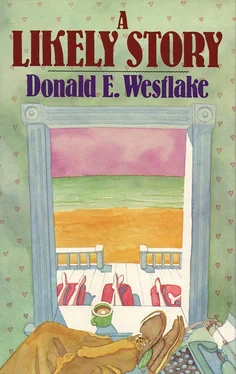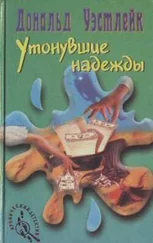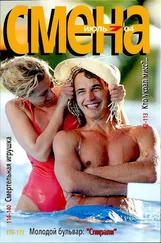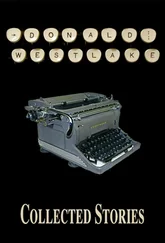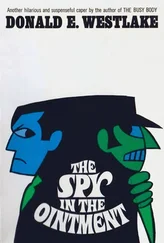Maybe so, but I’m with Bede. I mean, otherwise he’s pretty reliable, and the name sounds right. Anyway, if there ever was an Eostur, in the old days, and I mean the old days, her feast day was the vernal equinox, when bonfires would be lit in her honor, which makes sense. Also, the sun would start that day with three leaps up from the horizon in a dance of joy, and maidens clothed all in white would appear on mountains and in the clefts of rocks. What these maidens did if you went over and said, “Hi, you come here often?” I do not know, but spring festivals used to be pretty sexy before they reformed and got mixed up with the Christians. The original emphasis on fertility and fecundity is still palely visible in our Easter eggs and Easter rabbits, but the pizzazz is pretty well gone now, and it has merely become the only time of year when you can sell an otherwise sensible woman a lavender coat.
A former Easter custom I wish was still with us was the Risus Paschalis , which started in Bavaria in the fifteenth century. The idea was, the priest would tell jokes and funny stories during Easter Mass, in order to make the parishioners laugh, the laughter supposed to be a good gift for the risen Christ. However, the jokes got to be a little sacrilegious sometimes, so in the eighteenth century the practice was banned by Pope Maximilian III.
Whenever they hear anybody laughing, boy, they sure put a stop to it.
Yesterday, I took the boys — my boy Bryan and Gingers boy Joshua — to the Met’s opener out at Shea. We arrived by subway just before one, the boys as excited as if they were going to heaven instead of Shea Stadium, and we found ourselves in the midst of a large and young and happy crowd. Some people wore large orange buttons that said, in blocky black lettering, NOW THE FUN STARTS! The idea that there hadn’t been any fun up till now worked very well into my general mood, but I did my best to fight down my skepticism that things were about to change.
It was perfect opening day weather, sunny and breezy and nippy, which had brought out the Mets’ largest opening day crowd since 1968. We had press level seats, out beyond third base, high enough to get a sense of the stadium but low enough to be involved with the game, which the boys certainly were. This was Tom Seaver’s return to the Mets after years of exile in Cincinnati, so the occasion began with a standing ovation for Seaver as he walked the length of the right-field foul line to the Mets’ dugout.
Much learned discussion took place all around us as to whether the thirty-eight-year-old Seaver still “had it,” and how many innings he was likely to pitch; the consensus seemed to be that if he survived four or five, he could be considered to still have it.
The Philadelphia Phillies were the opposition, and their pitcher was Steve Carlton, another thirty-eight-year-old veteran, and from almost the first instant it was clear we were going to be treated to a pitchers’ duel. In the first six innings, Carlton permitted only two singles while Seaver allowed three singles and a walk; neither team ever threatened to score.
I spent more and more time watching the outer world beyond the outfield fence, where the big jets sailed slowly by, descending like stately matrons toward LaGuardia Airport, and where the unending traffic of the Van Wyck Expressway hurried along its busy antlike way, elevated above the scruffy neighborhoods. A tower of the Whitestone Bridge could be seen against the pale blue sky, contrasting beautifully with the rich green emptiness of the outfield. “What happens if they never score?” Joshua asked me. “Then the game never ends,” I told him.
And through it all, I kept thinking about The Christmas Book. Baseball starting, spring in the air, and my mind is filled with Christmas. In the last week I’ve received several more contributions, and I’m beginning to think the final shape of the book will be a bit odder than I’d originally planned. I did return Diana Trilling’s “Christmas In The Gulag,” saying we were trying to avoid politics — particularly global politics — in The Christmas Book , but William F. Buckley Jr.’s “Floating Celebration” I just cannot resist. It is a description of a Christmas Eve party on a yacht in the Caribbean, involving himself and his wife Pat and several of their middleweight celebrity friends, and failing a submission from Louis XVI this one has absolutely got to get into the book. What makes it wonderful is that, when Buckley describes the darkies singing carols for the gentry on deck beneath the torrid tropic sun, be thinks the subject is the tropic sun.
Isaac Asimov sent me another article, this one on the uses and meanings of gold, frankincense and myrrh in the ancient world. I returned it with thanks; why does he keep sending me things? I’ve already taken one.
Roddy McDowall sent a nice letter, apologizing for not having written sooner and suggesting a series of photos of famous people opening Christmas presents with their children. He had already accumulated several such over the years — Elizabeth Taylor, for instance — so he sent a few contact prints to give me the idea; lovely luminous black-and-white pictures, very heartwarming in the best possible way. We don’t expect such expressions on famous faces; it could be that the human physiognomy never looks sweeter or more blessed than when a present is given to a child. I wrote McDowall how much I liked the idea, only suggesting en passant that he risked a certain sameness overall, which I trusted his genius to be aware of and deal with.
Helmut Newton sent six photos of a naked woman dressed in various leather belts seated this way and that way on a department store Santa’s knee. I returned them with a note saying we’d abandoned the project.
I like what Tomi Ungerer sent. I’m not sure I can use it, but I like it. In a series of drawings, Santa Claus walks through the forest with his sack over his shoulder, enters a cottage, takes toys and cakes and goodies from the sack as delighted children gather around him — coming in from other cottages in the neighborhood, presumably — and then Santa grabs up all the children and puts them in the now-empty sack. He walks back through the forest, sack over shoulder, and into his cave, where he removes the Santa suit and white beard and is revealed to be an ogre. Okay!
I have also had occasion to write Andy Warhol.
Dear Mr. Warhol:
Thank you for the photos of the old round Coca-Cola tray with the smiling Santa Claus face on it. and the Santa Claus hand holding a Coke glass. The outlines you drew around everything in red and green are very thought-provoking, but unfortunately we have already made arrangements with the Coca-Cola Bottling Company, Atlanta. Georgia, to print a representation of the same tray in The Christmas Book. Not with your additions, of course, but perhaps the simple original will work best within our context.
What I did, when I got the Warhol package, was immediately phone the Coca-Cola company, and spoke to a PR woman there, and once she understood this was a legitimate middle-class operation with a respectable publishing company behind it she agreed I could use the tray photo for free. Those who wish doodles on the picture can mark up their own copies in the privacy of their homes.
In the meantime, despite Annie’s assurances, the greater shadow still looms over the book and me and all living things: Vickie Douglas continues to be my editor. Annie’s discussion with Wilson changed nothing. Day after day I am involving myself with this book — not only in correspondence with potential contributors, but also in library research for oldies and goodies, and in poring at home over endless anthologies and collections — and all the time, from the far distance, I can hear the slow beat of that muffled drum. “Vick-ie Doug-las,” the drum says, steady and deadly. “Vick-ie Doug-las. Vick-ie Doug-las.”
Читать дальше
